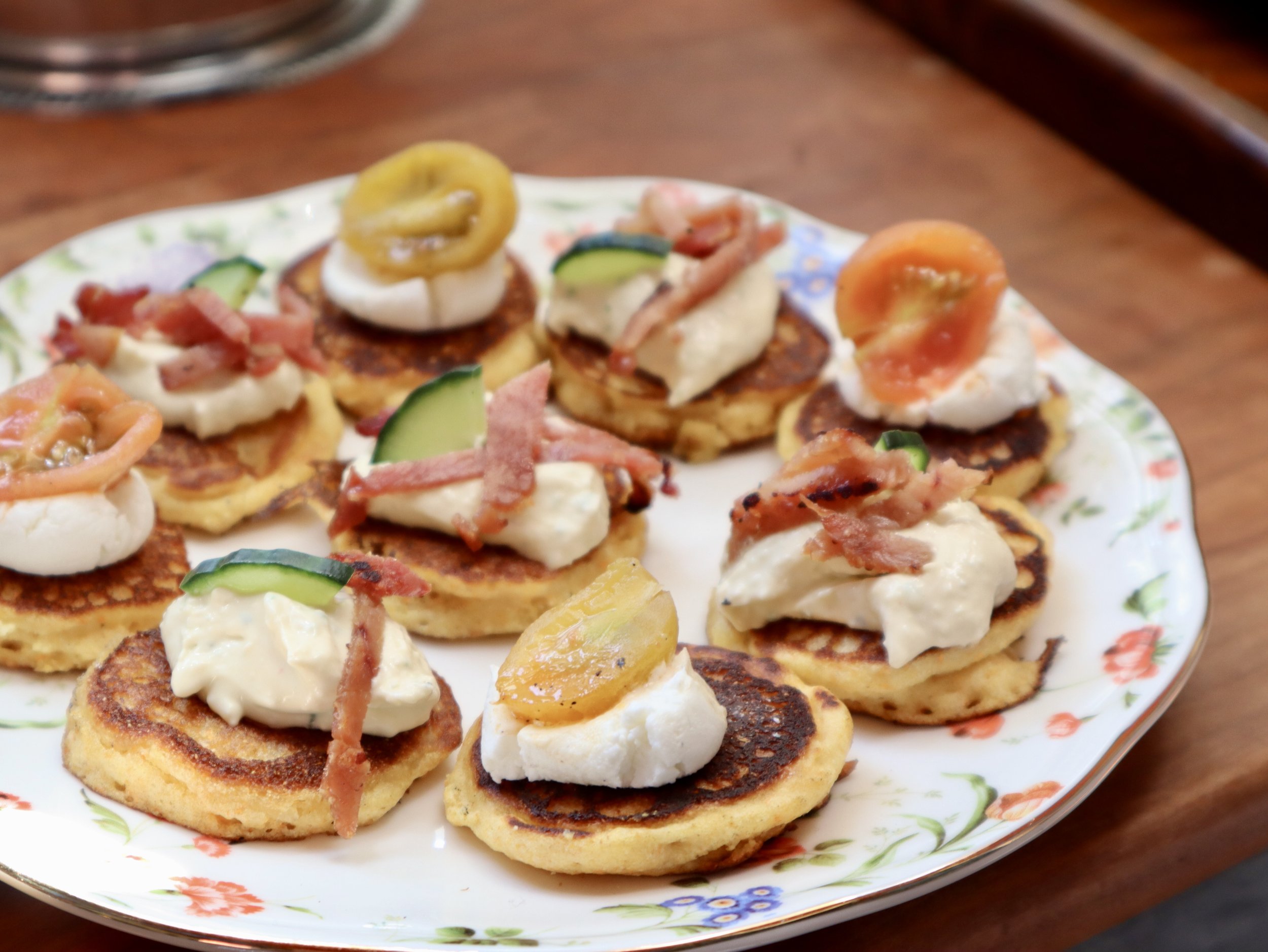Which Came First?
Which came first – the hoecake or the hoe? Depends on where you look, or who you ask. One story holds that hoecakes got their name from being baked on the blade of a hoe, in fields where enslaved people toiled.
But a hoe also referred to a cooking implement, either a wooden board (much like a pizza peel) or a flat metal plate. The entry for “bread hoes” in the Dictionary of American Regional English cites references like this one, describing a hoe as “a culinary utensil, a kind of skillet without sides. In this are baked hoe-cakes. …”
And yet another says “these cakes are so called because they are baked on hoes . . in some of the interior parts of the country where cooking-vessels are scarce. If this be true, I suppose that hoe, the skillet, is derived through hoe-cake from hoe, the agricultural tool, as the cakes baked on the cooking-vessels are of the same kind as those . . baked on the tools.’”
Rod Cofield, former executive director of Historic London Town in Maryland, begged to differ “...the term hoe (as) used for a cooking implement as early as 1670s strongly suggests that when colonists baked a mixture of Indian corn and liquid on a peel or griddle, this food item became known as a hoe cake. The name stuck even when a hoe cake was cooked in a skillet or pan.”
On the subject of peels, here’s an excerpt from Betty Fussell’s classic book, A Story of Corn. She writes ruefully of her attempt to replicate a recipe for johnnycakes (a hoecake sibling), baked on a wooden board.
“I had just such a board, which I propped against an iron trivet, in front of an open fire….The first cake slid off whole into the ashes. The next cake stuck to the board in patches, some burned, some gummily raw. Choked with smoke, front red with heat and back blue with cold and stiff from bending, I had new respect for my ancestral grandmothers and their corn complaints.”
Finally, there’s this distressing mention, also from the Dictionary of American Regional English, “The deceased . . declared before his death, that the Prisoner caused the wound . . by striking him on the head with a skillet or baking hoe.”
But back to the happier topic of hoecakes themselves! Which are? A cornbread variation – part of an extensive genealogy that also includes the aforementioned johnnycake (or journeycake), corn pone, corn dodger, corn cake, and so on. Originally made with just cornmeal, water and salt, hoecakes were eventually and increasingly enriched with sugar, egg, a bit of flour, and milk or buttermilk to replace the water.
In her Book of Cornbread Cookery, published in 1917 as part of the war effort, Mrs. Mary L. Wade included variations from Massachusetts, Maine, Vermont, New Hampshire, Connecticut, Georgia, Ohio and Indiana – apparently to prove that one could express patriotism through cornbread no matter their home state.
Our first president enjoyed a rather rich version of hoecakes, yeast-risen and served every morning with honey and lots of butter. George Washington’s step-granddaughter, Nellie Custis Lewis, shared the recipe with a friend, along with the instructions to make up the batter at night by candlelight and let rest until morning, and then to “drop the batter a spoonful at a time onto a hoe or griddle.”
We’re more likely to dispense the batter from a plastic squeeze bottle instead of a spoon and to cook our hoecakes in a standard cast iron skillet. Rather than yeast for leavening, we use self-rising cornmeal, or add baking powder and soda to regular cornmeal.
It helps to remember that baking powder wasn’t available in colonial America but yeast was, though it required a level of attention unlikely to be found outside well-staffed households (in Washington’s case, well-staffed with enslaved workers like Chef Hercules Posey.) Chef Posey eventually self-emancipated on February 22, 1797, while the president was celebrating at his Birth Night Ball in Philadelphia.
In Washington's time, Mount Vernon ran a mill with the capacity to process up to 8000 pounds of cornmeal and flour daily. Our own supplier of stone ground cornmeal is Weisenberger Mill in nearby Scott County. It’s now in its sixth generation of family ownership and operation, and our Holly Hill restaurants have been customers for over twenty years.
Each bag of Weisenberger cornmeal bears the name of the local farm where the corn was grown. At Weisenberger, the corn is ground in a stone burr mill, also called a grist mill. Weisenberger’s millstones are manufactured by Meadows Mills, out of North Carolina Balfour pink granite. The millstones operate in pairs – a revolving millstone called the “runner” stone and a stationary one called the “bedstone.”
The millstones are powered by electricity from a hydro-electric generator installed in the 1980s. It’s fun to park in Weisenberger Mill’s loading lot and walk out on the bridge to watch the Elkhorn Creek tumbling by below. But if you drive out to pick up cornmeal for your hoecakes, be sure to call ahead and place an order first. Or swing by our Holly Hill Cooking Studio in downtown Versailles, Ky.
And when you’re ready to make those hoecakes, do as we like to – create your very own Hoecake Nation. Here are a few topping suggestions to get you started: Maine lobster salad, Texas BBQ brisket, Georgia pimento cheese, Brooklyn cream cheese and lox, Indiana egg salad, So-Cal guacamole, Kentucky Benedictine. There’s no tastier way to unite!
Related Content
Hoecake Nation!
Weisenberger Hoecakes are the foundation of our Hoecake Nation. Once you've mastered this basic building block, you'll be ready to create your own United States of Hoecakes!
© 2024, Holly Hill Inn/Ilex Summit, LLC and its affiliates, All Rights Reserved





